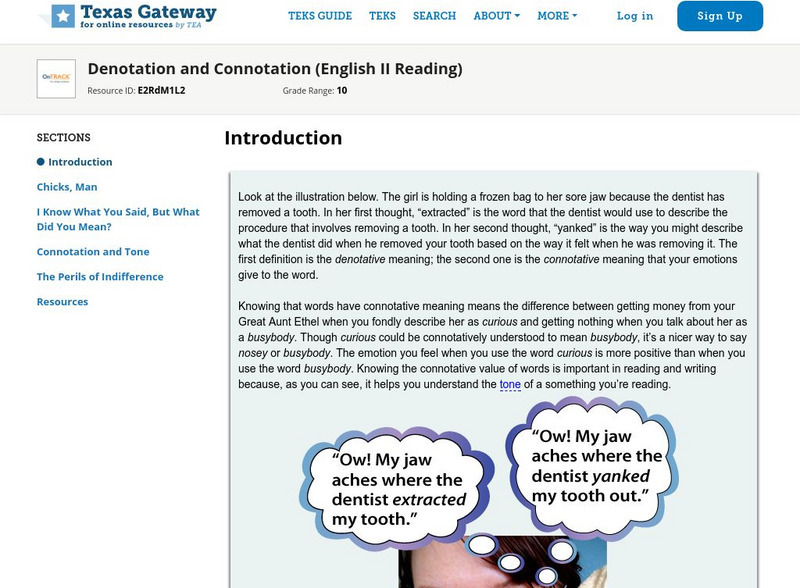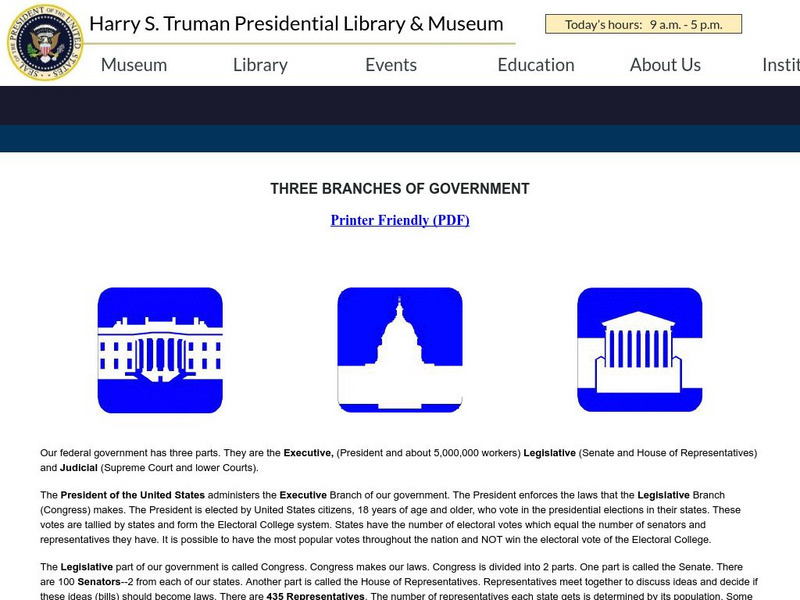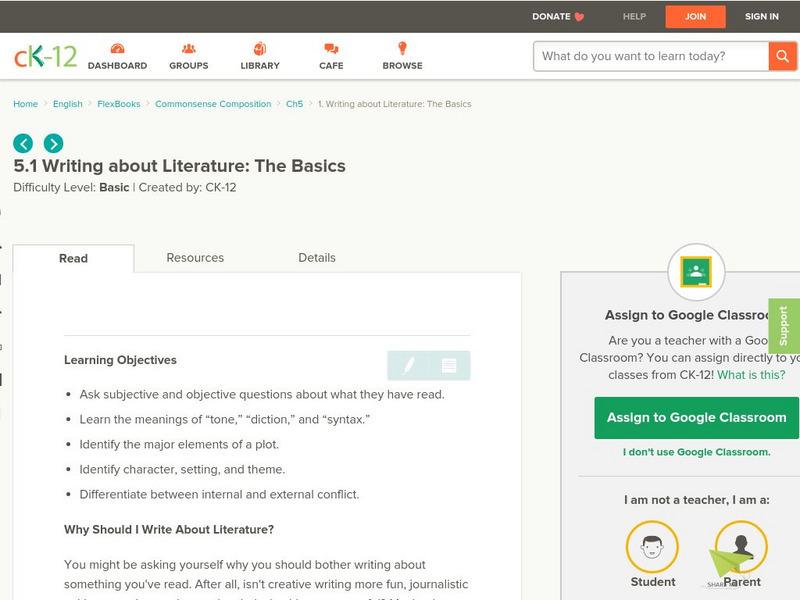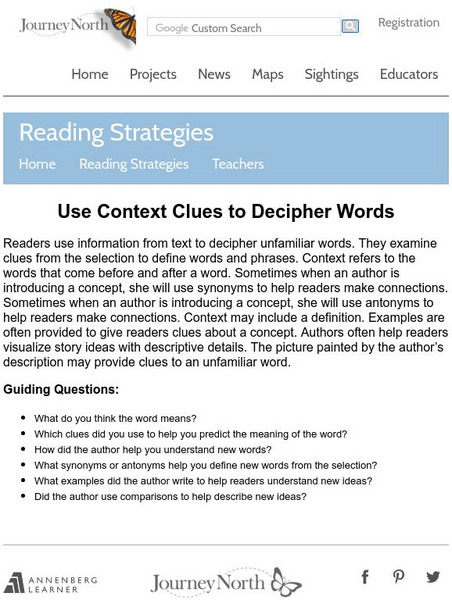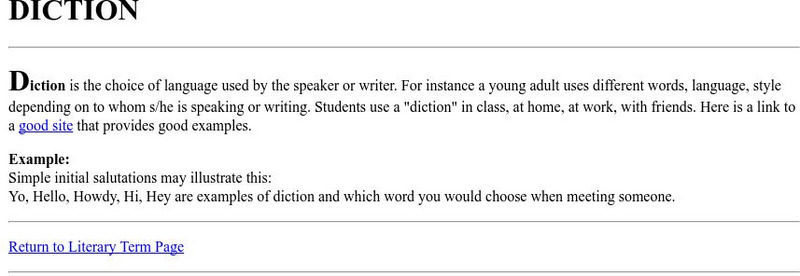Texas Education Agency
Texas Gateway: Analyze How Author's Style and Syntax Support Meaning
In this lesson, we will discuss how an author's syntax reveals meaning and makes ideas stay with the reader. Practice exercises are included.
Texas Education Agency
Texas Gateway: Literary Text: Diction and Tone
This lesson deals primarily with diction and tone and how to recognize them in your reading. Tone is largely determined by diction or the word choices a writer makes. The process of choosing the right word involves denotation and...
Texas Education Agency
Texas Gateway: Reading Comprehension Across Genres: Annotate for Meaning
This lesson focuses on Annotation, a "writing-to-learn" strategy. It consists of writing explanatory notes and critical (analytical) commentary to yourself. Annotating text consists of two steps: (1) underlining, highlighting, circling,...
Texas Education Agency
Texas Gateway: Denotation and Connotation (English Ii Reading)
This lesson is about how words can have emotional connections for readers. Connotation and denotation are a part of language, and knowing about them can help you understand not only the author's purpose, but also the author's attitude...
US Government Publishing Office
Ben's Guide to u.s. Government: Learning Adventures: Branches of Government
Introduction to a learning adventure on the Constitution and branches of government. Students click on their age group icon to find information on which part of the Constitution spells out the powers of legislative, executive and...
Harry S. Truman Library and Museum
Harry S. Truman Library & Museum: Three Branches of Our Government
This slide and the six that follow it (use the advance button near the bottom of the screen) offer an explanation of each of the three branches of government and the duties they perform, including discussion of the tensions arising from...
CK-12 Foundation
Ck 12: 5.1 Writing About Literature: The Basics
[Free Registration/Login may be required to access all resource tools.] Learn the basics of how to write about literature by asking subjective and objective questions; use tone, diction, and syntax; identify plot elements, and...
Annenberg Foundation
Annenberg Learner: Journey North: Reading Strategies: Use Context Clues to Decipher Words
This reading resource discusses the strategy of using context clues to decipher new words. A list of guiding questions is provided to help students as they use context clues to understand new words.
US Government Publishing Office
Ben's Guide to u.s. Government: Legislative Branch
This site designed for students, clearly describes congressional powers and provides excellent accompanying links.
PBS
Pbs: Passing a Bill Through Congress
Student handout provides the steps for how to pass a bill through Congress.
Alabama Learning Exchange
Alex: The Role of the Conference Committee
Students will use C-SPAN to observe short film clips of a Congressional conference committee in action. Students will hear the rules under which the committee functions and hear debate regarding aspects of the bill. Finally, students...
Alabama Learning Exchange
Alex: "I'm Just a Bill"
Students will examine current and recently introduced Congressional legislation using the Thomas search engine. After reading legislation, students will write and post their proposed legislation for peer editing and comment. This lesson...
Khan Academy
Khan Academy: Activity: Evaluating Writing
Students can learn how to grade an essay with a rubric in this activity. The essay is a sample from Big History essay called "Early Earth". The goal of this activity is for students to understand the rubric so they can write their own...
Khan Academy
Khan Academy: Clarifying Meaning Quick Guide
In a given text, words and phrases do not appear in isolation but are embedded in the context of a narrative, an argument, an explanation, and so on. Accordingly, clarifying meaning questions test your ability to identify contextually...
Joe Landsberger
Study Guides & Strategies: How to Read an Essay
Use this guide when reading an expository text or any type of essay, as it provides important questions you should ask yourself while you read. You can access this page in multiple languages from the English homepage.
Ted Nellen
Cyber English (By Ted Nellen): Anagram
This is a glossary entry for the term "Anagram" including a definition and an example.
Ted Nellen
Cyber English (By Ted Nellen): Anaphora
This is a glossary entry for the term "Anaphora" including the definition, examples, and a link to more information.
Ted Nellen
Cyber English (By Ted Nellen): Anastrophe
This is a glossary entry for the term "Anastrophe" including the definition and an example.
Ted Nellen
Cyber English (By Ted Nellen): Aphorism
This is a glossary entry of the term "Aphorism" including definitions and examples.
Ted Nellen
Cyber English (By Ted Nellen): Caesura
This is a glossary entry for the term "Caesura" including a definition and an example.
Ted Nellen
Cyber English (By Ted Nellen): Connotation
This is a glossary entry for the term "Connotation" including the definition and an example.
Ted Nellen
Cyber English (By Ted Nellen): Diction
This is a glossary entry for the term "Diction" including a definition, an example, and a link to more examples.
Ted Nellen
Cyber English (By Ted Nellen): Foil
This is a glossary entry for the term "Foil" including definition and examples.
Ted Nellen
Cyber English (By Ted Nellen): Hyperbaton
This is a glossary entry for the figure of speech "Hyperbaton" including definitions from two sources.





